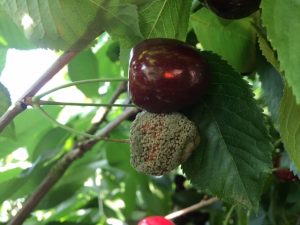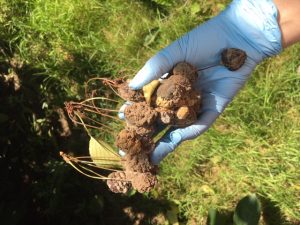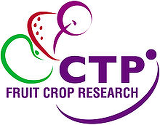October 2017 – September 2021
Sophia Bellamy

After completing a BSc in Biological Science at the University of Exeter, Sophia worked for five years in fundraising for a health charity. In 2017 she completed a masters in applied plant science at the University of Greenwich, graduating with distinction.
Research Summary


Brown Rot, caused by Monilinia spp., is one of the most important diseases in stone fruits worldwide. Brown rot can cause blossom wilts and fruit rots in the orchard as well as latent infections of fruit, leading to post-harvest fruit decay. Current control methods rely on scheduled spraying of fungicides. However, the continuing pressure to reduce fungicide use has seen an increase in research into alternative management methods, such as biological control. NIAB EMR recently identified two microbes that significantly reduced sporulation of M. laxa under laboratory conditions. These two isolates were a bacterial species Bacillus subtilis (B91) and yeast-like fungus Aureobasidium pullulans (Y126) and are currently being formulated into commercial products. We are investigating how to optimise the use of these two potential biocontrol products in practice, in terms of suppressing Monilinia sporulation on overwintered mummies and preventing infection of blossoms and fruits.
When applied to mummified fruits in winter Y126’s population declined rapidly in the first two weeks after which the population stabled. The B91 survived a little longer with the population reaching that of the control group by week 4. Neither BCAs affected the population of M. laxa. The interaction time between the BCAs and M. laxa showed the longer the interaction time the lower the spore count of M. laxa.
Another study was performed looking into the ability of our BCAs to colonises and survive on blossoms. B91 did not survive well on blossoms but could survive on fruits. However, its antagonistic compounds need to be in relatively high concentration to be effective against M. laxa. Therefore, it is best used as a fungicide, ensuring the antagonistic compounds are at a high concentration when applied to the field. Y126 can persist throughout the season and was marginally, though not statistically significantly, more effective at long term reduction in M. laxa. This is because Y126 works through competition, therefore the interaction time with the pathogen is important. The difference between the BCAs highlights the need to understand each BCA’s ecology to ensure maximum efficacy.
In a latent infection experiment, we inoculated trees with M. laxa and then treated them with the two biocontrol isolates two weeks before harvest. Post-harvest disease development was assessed after four days of storage. There was a significant reduction in rot incidence (p < 0.001) of 29% (Y126) and 27% (B91) in 2019 and 62 % (Y126) and 80 % (B91) in 2020 when the harvested fruit was stored at cold store levels.
When introducing new products into the environment, it’s important to understand the effects that may have on the plant’s microbiome. Using next-generation sequencing techniques, we looked at the impact B91 and Y126 has on the blossom and cherry microbiomes. There was a treatment effect in both the bacterial and fungal communities on the blossom and ripe cherry. But the biggest effect was between blocks (Geographical effect) and between the years in which we experimented (P < 3 x 10-16).
This research will assist in the development of management strategies, especially spray timings for brown rot on stone fruit, integrating BCAs with other management practices.
Research achievements
Sophia has succesfully defended her thesis in 2021. She has already published two papers in European Journal of Plant Pathology, and is currently preparing two more manuscripts for publicaiton.
Publications in peer-reviewed journals
- Biocontrol agents to manage brown rot disease on cherry
- Field application of Bacillus subtilis and Aureobasidium pullulans to reduce Monilinia laxa post-harvest rot on cherry
Other publications
